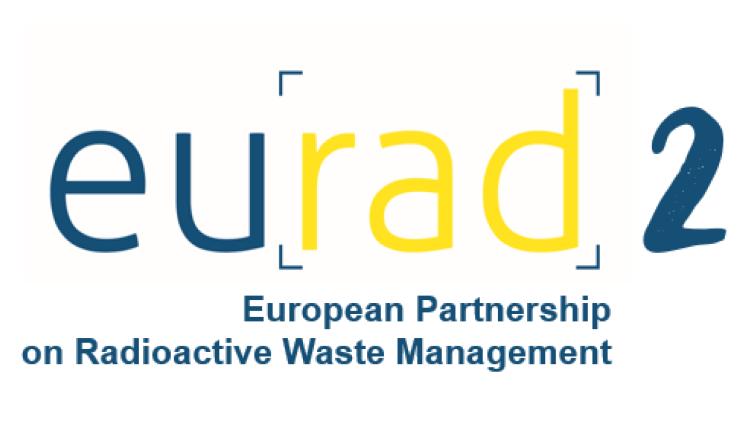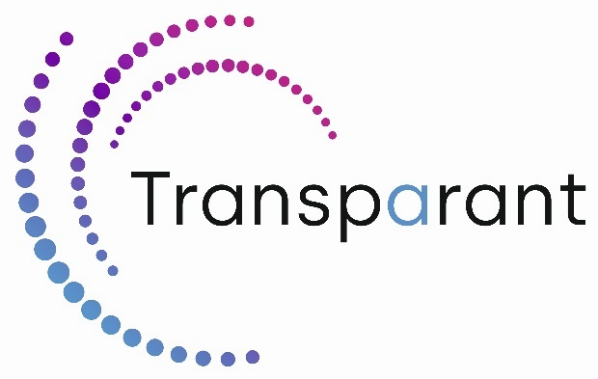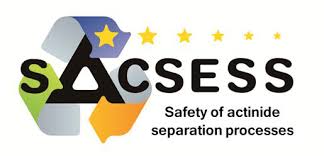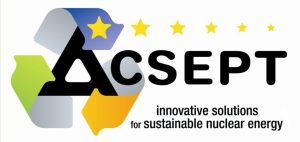Running Projects
European Partnership on Radioactive Waste Management
The EU-funded EURAD-2 partnership builds on EURAD-1 and PREDIS, advancing a joint programme for research, development, and knowledge management of radioactive waste across EU Member States and assisting national RD&D programmes for the long-term management of various types of radioactive waste. More than 140 organizations from 28 countries are involved in the programme. Covering all phases, including predisposal and disposal, through a robust science, technology, and knowledge management programme to support the timely implementation of radioactive waste management activities, EURAD-2 also aims to foster a mutual understanding and trust among participants. It supports the implementation of the Waste Directive in EU Member States, taking into account the various stages of advancement of national programmes, the differences in capabilities and inventories, to ensure safe, responsible, and publicly acceptable radioactive waste management across Europe.
Technological Research Action Necessary for Safe PARrtitioning And Nuclear Transmutation
Nuclear energy is crucial in combating climate change. However, effective waste management and resource optimisation require recycling used fuel. The Transparant project aligns with the Sustainable Nuclear Energy Technology Platform (SNETP) deployment plan and focuses on the efficiency of Americium separation from used fuel, on experimental and fuel performance code development work studying the behaviour of Am bearing fuel under irradiation and on the safety related research supporting the licensing process of MYRRHA in its role as dedicated accelerator driven transmuter demonstrator.
Versatile FUran-based polymeRs for strIct and high value applicatiOns in packaging, aUtomotive and underwater environmentS
Τhe goal of the FURIOUS project is to develop novel versatile furan-based polymers to enrich the portfolio of bio-based and biodegradable innovative mono-material solutions proposed to replace traditional plastics. Innovative results of FURIOUS will contribute to the development of Sustainability-by-design database, used to assess and predict the performance of novel materials and to derive a set of guidelines for the end-use applications.
Building European Nuclear Competence through continuous Advanced and Structured Education and Training Actions
Nuclear power and non-power technologies are technically very complex facilities that operate in the increasingly challenging regulatory framework and market conditions. Development, construction, operation, decommissioning, waste management and oversight of these facilities require personnel with excellent education, skills and motivation. Excellent workforce should remain the basic enabler of safe long-term operation of existing and development of advanced facilities. ENEN2plus stands for the largest and most integrative nuclear Education and Training (E&T) efforts up to date, integrates the still fragmented European E&T community by bringing together the large number of participants from all nuclear energy related fields and from the non-power applications.
Pre-disposal management of radioactive waste
The PREDIS project targets the development and implementation of activities for pre-disposal treatment of radioactive waste streams other than nuclear fuel and high-level radioactive waste.
Member States will profit from measurable benefits including the further development and increase in Technological Readiness Level of treatment and conditioning methodologies for wastes for which no adequate or industrially mature solutions are currently available.
Partitioning And Transmuter Research Initiative in a Collaborative Innovation Action
The PATRICIA project follows that plan and answers to NRFP7 of the 2018-2019 EURATOM call: Research and Innovation for Partitioning and/or Transmutation. It focusses on research on advanced partitioning to efficiently separate Am from spent fuel, on experimental and fuel performance code development work studying the behaviour of Am bearing fuel under irradiation and on the safety related research supporting the licensing process of MYRRHA in its role in the development trajectory for a dedicated accelerator driven transmuter. It may be noted that for first time, the communities working of partitioning, transmutation and the development of MYRRHA are joint in one project.
Completed Projects
Augmented cooperation in education and training in nuclear and radiochemistry
The A-CINCH project augments CINCH teaching tools developed in the three previous projects – CINCH, CINCH II and MEET-CINCH – with the state of the art three-dimensional (3D) virtual reality (VR) environment to complete the existing toolbox for radiochemistry education.
It is our belief that including a sophisticated VR radiochemistry lab and integrating it with traditional teaching, training, and advanced distance-learning methods available among the CINCH Tools will make the NRC field more attractive for younger generations and enhance the learning outcome of the very expensive, but indispensable, hands-on training.

1 June 2017 – 30 August 2020
A modular european education and training concept in nuclear and radio chemistry
In 2010–2016 a series of two “CINCH projects” – CINCH-I: Cooperation in Education in Nuclear Chemistry, and CINCH-II: Cooperation and training in Education in Nuclear Chemistry – was supported within Euratom FP7. The projects aimed at mitigating the special skill-based deficits within nuclear chemistry at masters and doctorate levels and the decline of number of staff qualified in this field.
The MEET-CINCH project does not aim at sustainability only – its main aims are to pro-actively bring the results achieved so far to their end-users (CINCH VET e-shop), significantly contribute to attracting new talents and increasing the nuclear (chemistry) awareness by developing a MOOC – Massive Open On-line Course, and investigate the applicability of the modern Flipped (Inverted) Classroom concept in the nuclear chemistry teaching and training field.
Generation IV Materials Maturity
The general objective of GEMMA Project is to qualify and codify the selected structural materials for the construction of Generation IV reactors, as envisaged within the European Sustainable Nuclear Industrial Initiative (ESNII). The structural materials, to be considered in the GEMMA project, are those selected by the designers of the ESNII systems for fuel cladding and, in some cases, for the main vessel and the internals. Their qualification means that their resistance to harsh exposure conditions of high temperature, highly corrosive environment and intense flux of fast neutrons, will be experimentally verified and/or numerically modelled. The applicability of materials to the reactors’ construction implies also that relevant welded joints will be tested as well as corrosion protection treatments. Even the corrosion resistance of new Alumina Forming Alloy steels and surface treatments will be tested in representative conditions.
GEN IV integrated oxide fuels recycling strategies
The GENIORS Horizon 2020 project focuses on improving current recycling of spent nuclear fuel and future multiple recycling strategies to be implemented in the 4th generation of reactors expected to enter operation by 2030. Through sound research and an innovative approach, GENIORS is expected to provide the EU with science-based strategies for nuclear fuel management and contribute significantly to its energy independence. In the longer term, the project’s results will facilitate radioactive waste management by reducing its volume and radiotoxicity, and support a more efficient utilisation of natural resources.
Safety of Actinide Separation Processes
Nuclear power plays a key role in limiting greenhouse gas emissions in Europe and contributes heavily to improving the EU’s independence, security and diverse energy supply. Yet, its social acceptance is closely linked to enhanced safety when managing long-lived radioactive waste. This contributes to resource efficiency and cost-effectiveness of this energy source, and ensures a robust and socially acceptable system protecting society and the environment.
Among the different safety strategies, partitioning and transmutation (P&T) reduces the amount of radiotoxicity and thermal power of these wastes, and leads to an optimal use of geological repository sites.
In line with SNETP’s Strategic Research Agenda, the SACSESS collaborative project provides a structured framework to enhance the fuel cycle safety associated to P&T. Safety studies will be performed for each selected process to identify weak points to be studied further. These data will be integrated to optimise flowsheets and process operation conditions. A training and education programme addressing safety issues in the nuclear energy industry will be implemented in close collaboration with other European initiatives.
Innovative solutions for sustainable nuclear energy
Actinide recycling by separation and transmutation is considered worldwide and particularly in several European countries as one of the most promising strategies to reduce the inventory of radioactive waste, thus contributing to make nuclear energy sustainable. Consistently with potentially viable recycling strategies, the Collaborative Project ACSEPT will provide a structured R&D framework to develop chemical separation processes compatible with fuel fabrication techniques, with a view to their future demonstration at the pilot level. Considering technically mature aqueous separation processes, ACSEPT will optimise and select the most promising ones dedicated to actinide partitioning and those featuring a group separation. These developments will be appropriately balanced with an exploratory research focused on the design of new molecules. In parallel, promising group actinide separation pyro-processes will be developed beyond the current state-of-the-art, as an alternative option, for a longer term. ACSEPT will also pave the way towards more integration between Partitioning and Transmutation by carrying dissolution as well as actinide conversion studies. All experimental results will be integrated by carrying out engineering and systems studies on aqueous and dry (pyro) processes to prepare for future demonstration at a pilot level. A training and education programme will also be implemented to share the knowledge among partitioning community and present and future generations of researchers. The challenging objectives of ACSEPT will be addressed by a multi-disciplinary consortium composed of European universities, nuclear research bodies and major industrial players. This consortium will generate fundamental improvements for a future design of an Advanced Processing Pilot Unit. ACSEPT will thus be an essential contribution to the demonstration, in the long term, of the potential benefits of actinide recycling to minimise the burden on the geological repositories.
EUROpean research program for the PARTitioning of minor actinides and some long-lived fission products from high active wastes issuing the reprocessing of spent nuclear fuels
The research to be done within EUROPART concerns the Partitioning of long-lived radio nuclides (Lars) contained in the nuclear wastes issuing the reprocessing of nuclear spent fuels. After separation, the Lars will be destroyed in short-lived or stable nuclides by nuclear means (P&T strategy) or conditioned into stable dedicated solid matrices (P&C strategy) The target elements will be the actinides (Ands): Am to CIF for the wastes issuing the reprocessing of UOX or MOX fuels, and U to CIF for the reprocessing of spent fuels and targets (ex: the nuclear double strata concept). The separation techniques to be studied will belong to 2 domains: hydrometallurgy, hydrometallurgy (cf. the previous FP5 programs).












